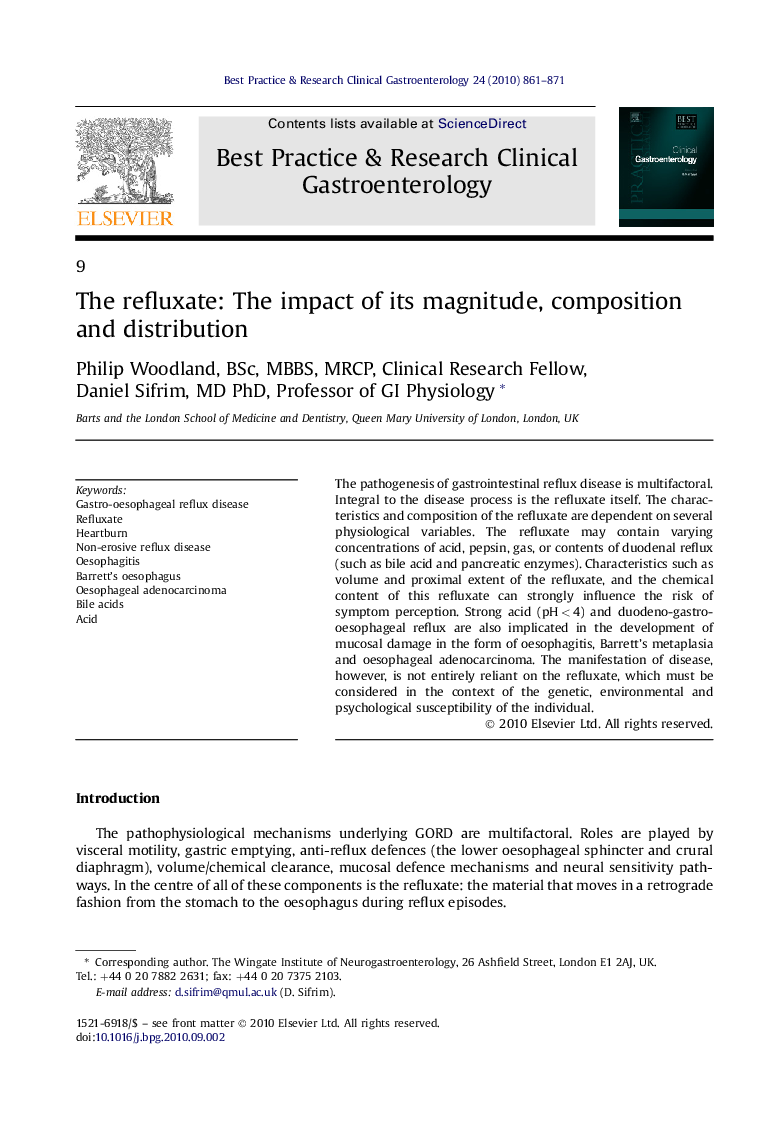| Article ID | Journal | Published Year | Pages | File Type |
|---|---|---|---|---|
| 3254379 | Best Practice & Research Clinical Gastroenterology | 2010 | 11 Pages |
The pathogenesis of gastrointestinal reflux disease is multifactoral. Integral to the disease process is the refluxate itself. The characteristics and composition of the refluxate are dependent on several physiological variables. The refluxate may contain varying concentrations of acid, pepsin, gas, or contents of duodenal reflux (such as bile acid and pancreatic enzymes). Characteristics such as volume and proximal extent of the refluxate, and the chemical content of this refluxate can strongly influence the risk of symptom perception. Strong acid (pH < 4) and duodeno-gastro-oesophageal reflux are also implicated in the development of mucosal damage in the form of oesophagitis, Barrett’s metaplasia and oesophageal adenocarcinoma. The manifestation of disease, however, is not entirely reliant on the refluxate, which must be considered in the context of the genetic, environmental and psychological susceptibility of the individual.
